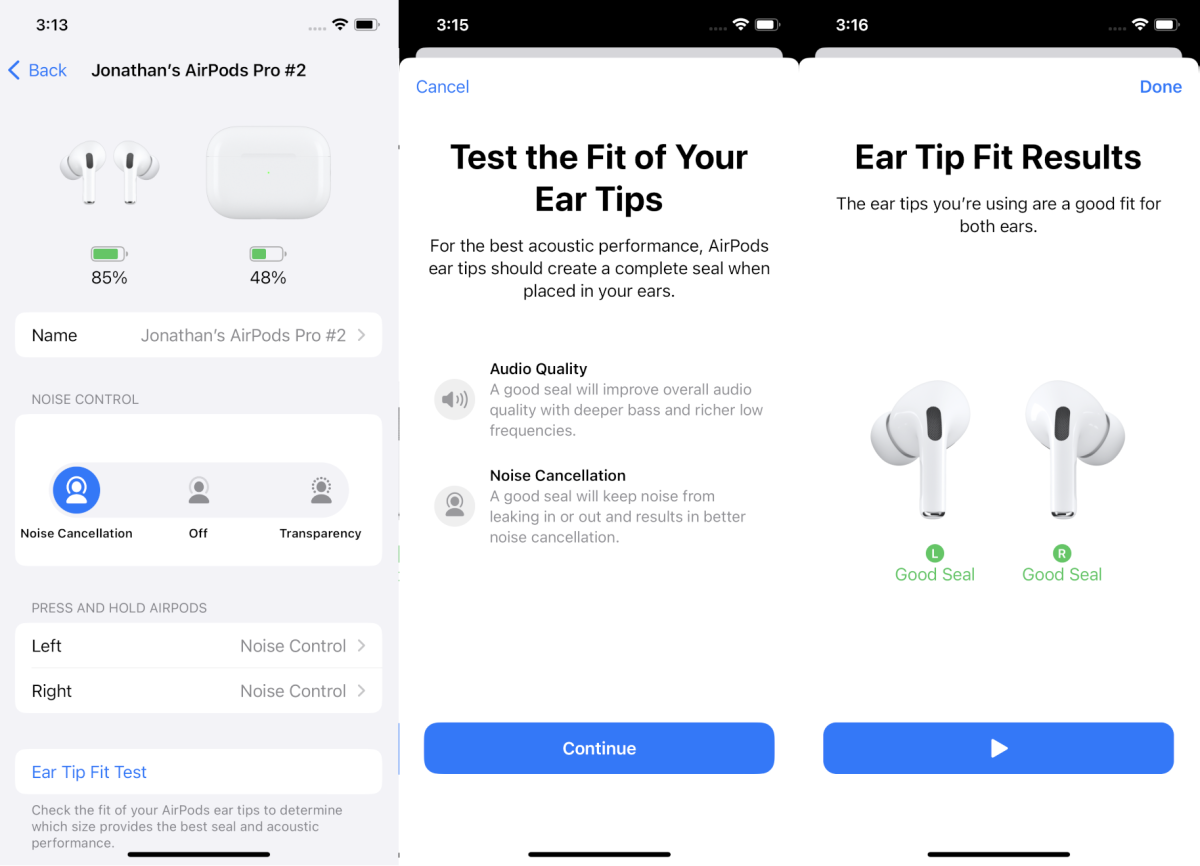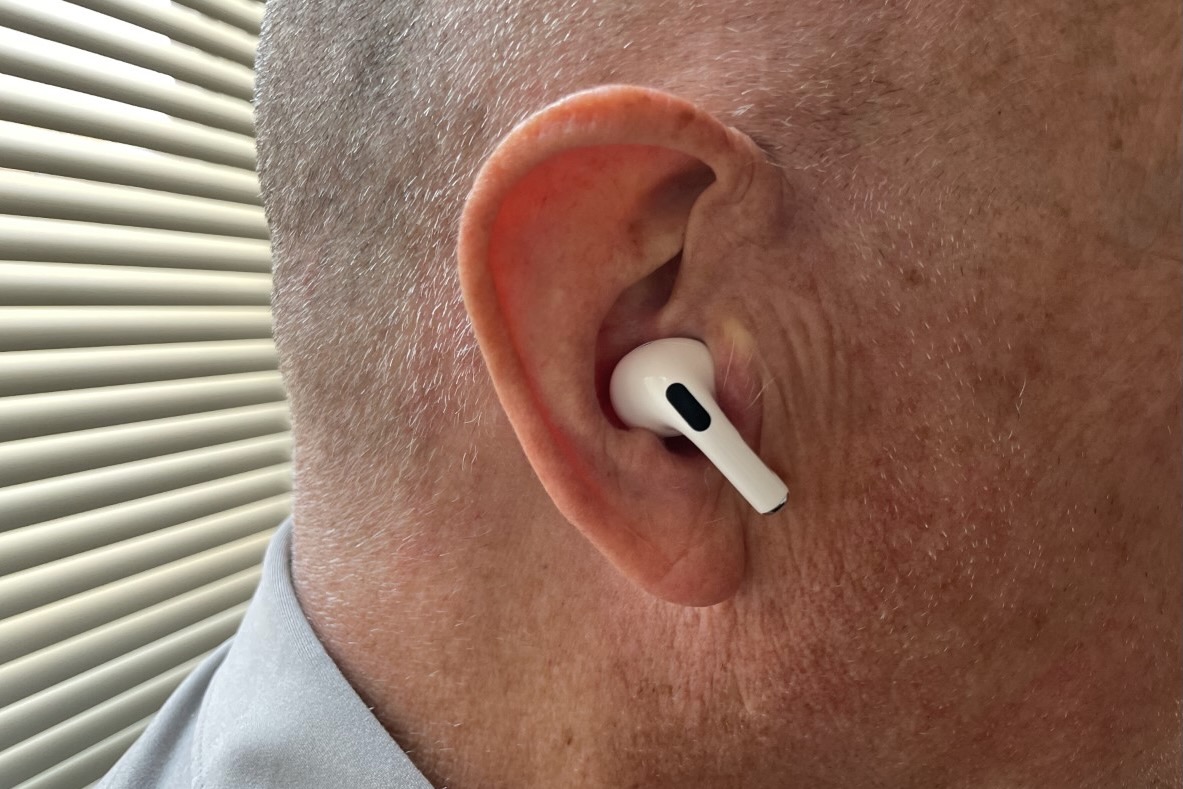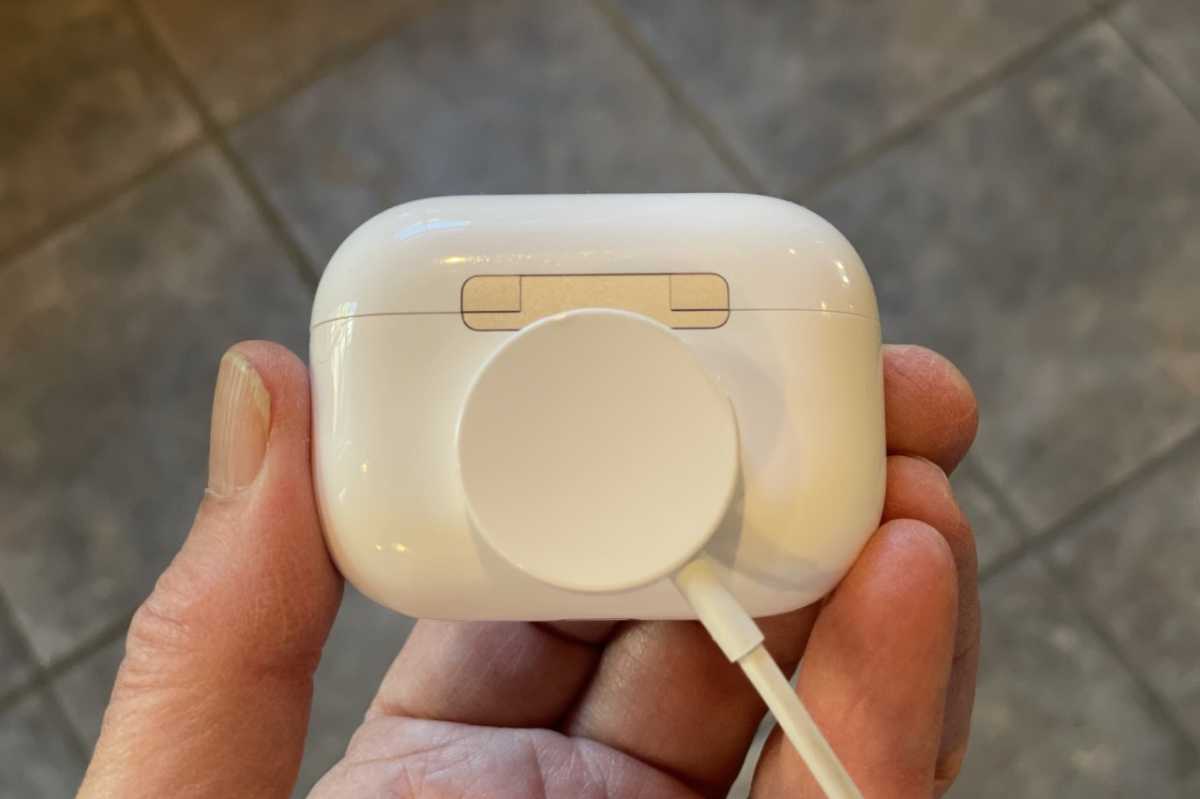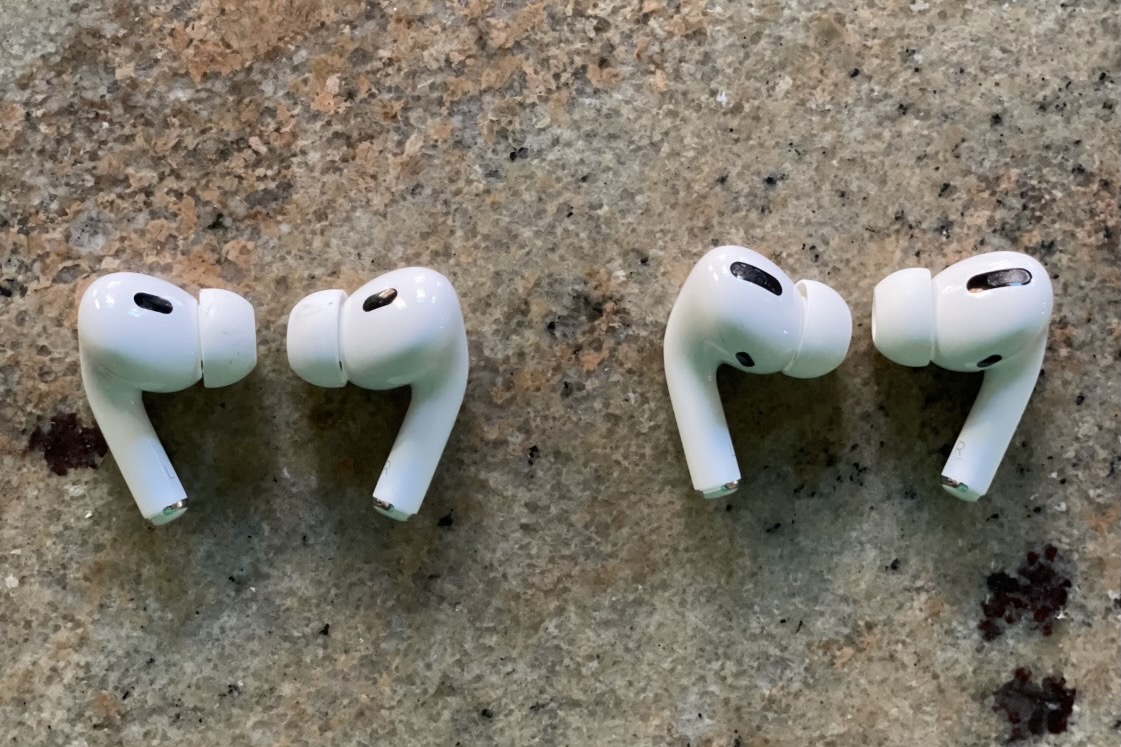Apple AirPods Pro (2nd gen) review: Second time’s the charm
At a glance
Mục lục bài viết
Expert’s Rating
Pros
- Top-tier sound reproduction
- Much improved ANC
- Better battery life
- Case works with a variety of MagSafe chargers
Cons
- Lacks user customizable EQ options
- IPX4 splash resistance for buds and case is just so-so
- Geared primarily toward the Apple ecosystem
- No lossless playback
Our Verdict
Apple’s second-gen AirPod Pros put on a great show with first rate sound reproduction, smart noise cancellation, and a host of extras you won’t find elsewhere.
Price When Reviewed
$249
Best Prices Today: Apple AirPods Pro (second-generation)
Don’t let the generic look of Apple’s high-end, second-generation AirPods Pro fool you. The latest rendering of Apple’s glossy white, pipe-tipped premium bud is far better than its three-year-old predecessor, with much improved musical performance and superior active noise cancellation.
The core performance parameters of the second-gen AirPods Pro put Apple in the same ballpark with Bose, Jabra, JBL, and Sony. And to set its new earbuds apart from the pack, Apple has imbued the new AirPods Pro with a host of new and innovative features that clearly kept the brainstormers in Cupertino up at night.
This review is part of TechHive’s in-depth coverage of the best noise-cancelling headphones.
What phones will the AirPods Pro work with?
One critical Apple differentiator needs to be addressed right away. Unlike other brands of buds that perform agnostically with both iOS- and Android- based products, Apple’s AirPods only achieve their full potential within the Apple ecosystem. You can pair the AirPods Pro with any Bluetooth audio device, but to enjoy features such as personalized and head-tracked spatial audio, Apple’s ear tip test, and the new location-finding functionality built into the charging case, you’ll need to use the Pros with an Apple product.
By far the deepest set of control options are found on the iPhone, hiding out in the Settings menu under both the earbuds’ own tab (which only pops up at the top of the list when they’re actively connected) and farther down the menu in the Music menu. Additional AirPod monitoring and adjustment features are revealed in three windows of the pull-down Control Center.

You’ll need to pair the AirPods Pro with an Apple device to take an ear tip fit test.
Jonathan Takiff/Foundry
How many pairs of ear tips do the AirPods Pro ship with?
Not everything about the AirPods Pro is complicated. Out of the box, new finessing to the bud design make the second gen Pros more flexible and pleasurable to use.
Silicone bud tips (only found on the Pros) now come in four size options instead of three (the “XS” tip is new), improving fit options. The bulbous top of the buds also seems slightly re-sculpted to (hopefully) hold them in place better, a concern raised often by athletes sporting these slippery things in their sweaty ears. As a long-distance stroller, I didn’t have any problems keeping the silicone bud tips in place.
On the operations front, a different sensing system–specified as “skin detecting” rather than optical–works more reliably to turn the AirPods on when placed in your ears and to pause your music when removed.

The second-generation Apple AirPods now come with four sets of ear tips, including an extra-small pair.
Jonathan Takiff/Foundry
I’m mostly loving the new slide-your-finger volume control on the earbuds stems. A swipe up or down on the control adjusts the volume a single step, meaning you won’t accidentally blast the sound, and there’s no way to confuse the action with the click for playing/pausing tunes or fielding calls. You can also long-press a stem for switching between ANC and Transparency modes.
What’s new with the AirPods Pro charging case?
Significant refinements to the AirPod Pro’s carry/charge case are a big help when it’s time to put them away for the night or find the buds when they’ve gone missing.
With its new on-board speaker and U1 chip, the case sings out its location loud and clear when you ask Siri to “Find My AirPods.” And as with other Apple buds, an unsheathed, gone-missing bud can also be remotely triggered to chirp, albeit in a quieter fashion.
I’m happy to report that the Find My function shortened a panic attack after these pricey ($249) buds disappeared. My first thought was that they’d slipped out of my pocket; the case is just as shiny/slippery as the buds. But a “bleep, bleep” later, I realized they’d burrowed down into a dark, deep recess in my daypack.
Yeah, a non-slip, custom fitting rubber cover is recommended for the new AirPods case, and third parties are already selling them for as little as $10 on Amazon. The only downside is you’ll have to cover up the custom insignia or emoji which Apple is offering to carve into the case. Another option is to slip a lanyard into the charging case’s new lanyard loop.
The buds and case for the new AirPods Pro arrive with an IPX4 rating, denoting protection against splashing water in any direction. That means the AirPods Pro should survive a jog on a rainy day, but dropping them in a pool would be a no-no.
Do the AirPods Pro offer wireless charging?
Users should also get a charge out of the multiple ways this MagSafe-adept case and buds can regain their depleted power. (The MagSafe feature was unavailable when the first Pros came out, then was added in a model upgrade two years later.)
Just plop the second-gen Pro case down on a magnetized MagSafe pad, Qi-certified charger, or–new and currently exclusive to the Pro 2–on a magnetically connected Apple Watch puck charger.

The charging case for the second-generation AirPods Pro can now work with an Apple Watch MagSafe charger.
Jonathan Takiff/Foundry
Of course, recharging can also be managed the old-fashioned way with a plugged-in (and supplied) Lightning-to-USB cable.
(Cautionary note: If the AirPods case keeps blinking and beeping, you’re not making a proper connection with the magnetic charging base. Separate the two to avoid excessive case heating and potential battery damage.)
How much battery life do the second-gen AirPods Pro have?
Overall run time per charge has notched up a bit on the second-generation AirPods Pro, to six hours max of listening or 4.5 hours of talk time.
The new case stores enough backup battery juice to fully recharge the buds four times, up from three in the prior package.
Just five minutes of charge in the carry case gets these AirPods going again for an hour.
What hearing safety features do the second-gen AirPods Pro have?
Other features not found elsewhere in bud-land make the new AirPod Pros a more functional friend, likely to be employed in unconventional settings like restaurants and concert halls where wearing earbuds might seem antisocial, silly, or counterproductive.
Activate the Live Listen feature (accessible in the Ear tab) and the Pros can double as hearing aids, amplifying sounds picked up on your iPhone’s microphone.
Another feature aims to help music blasters avoid permanent hearing damage. An on-screen Sound Pressure meter can trigger alerts when you’ve cranked the AirPod Pro’s volume too loud or are lingering in a dangerously loud area, such as a construction zone. The meter shows up in the Ear window on the iPhone. Other notifications can be turned on in your iPhone’s Settings under Accessibility/A/V, and as an app (Noise) for the Apple Watch.

This iOS Control Center widget can warn you if your AirPods Pro are cranked up too loud.
Jonathan Takiff/Foundry
New and exclusive to the second gen AirPods Pro is an Adaptive Transparency option that can be layered atop the (previously available) Transparency mode. Normally the Transparency tool opens up the earbuds to receive outside sound blended with your music. But when Adaptive Transparency is engaged, it imposes a sound limiter/suppression feature that tamps down the volume of sound beaming through the ear bud microphones.
I tested the Adaptive Transparency tool at a medium-loud concert where the band was peaking at 106-110 dB (as measured by the dB Meter app on my iPhone 12 Pro), and I was pleasantly surprised by the effect.
The AirPods didn’t cut the volume level quite as much as did my standby Loop Experience Earplugs, which manage an 18 dB volume reduction. I’d guesstimate the AirPods shaved the volume by maybe 12 or 14 dB.
That said, the AirPods volume drop was even tempered, and it didn’t screw with the fidelity of the music. I could still fully enjoy the tonal and textural/dynamic mix, and I even heard some nuances previously buried in the louder (sans protection) sonic blast. The Loops (priced at $30) are better than most other earplugs in preserving sonic range, but they come up short in sharing “presence” compared to the AirPods Pro with Adaptive Transparency engaged.
Does the second-gen AirPods Pro have a new processor?
Apple’s next-generation H2 chip with “advanced computational” power is behind many of the sonic improvements in the AirPods Pro 2, working in partnership with the upgraded amplification and (10-percent larger) 11mm drivers, repositioned beam-forming microphones, and re-tweaked Digital Signal Processing.
The H2 redesign doubles the on-board transistors (compared with the H1 chip) to more than one billion, making the H2 processor more adept at signal sampling (48,000 times per second) and music shaping, while actively filtering out the sour notes of the world.
This latest iteration still doesn’t support lossless audio streaming. Apple argues that even the updated Bluetooth 5.3 radio transmitter at play here isn’t up to the task. But the supported Apple AAC codec does lossy encoding so well, you could easily mistake it for high-res, especially when listening on-the-go and only giving the music 75 percent of your attention.

At a glance, it’s difficult to tell the first- and second-generation AirPods Pro apart.
Jonathan Takiff/Foundry
How do the second-gen AirPods Pro sound with music and phone calls?
On the pure musical performance front, the second- gen AirPod Pro earbuds deliver a more forward, significantly fuller (especially in the bass department), and more detailed sound than the first-gen Pros produced.
I’ve had a heap of fun putting new AirPods Pro through their performance paces and never felt disappointed with a wide variety of content thrown at them, from a bluesy rock showpiece All the Love from the Tedeschi Trucks Band (on their I Am the Moon album) to Beyonce and Madonna’s dance floor thumping, vogued-out Queens Remix of Break My Soul.
I’ve also been reveling in the sweet, woodsy instrument vibes, taut kerplunks, and gritty, rosin-on-the-bow string details in the career overview set Timeline, by the ultra-melodic Finnish folk ensemble Frigg. And a fresh, beautifully remastered rendering of John Coltrane’s classic, 64-year-old Blue Train set sounds remarkably in the moment on the new AirPods Pro, revealing lots more meat on the bones than the predecessor Pros could carve out.
Mobile iPhone calls fed through these buds are smoother and more pleasurable for both parties, while delivering a better sense of “presence” than the first-gen AirPods Pro. My favorite 12-year-old test assistant Leah said our iPhone-to-iPhone call sounded like I was talking to her “in real life.”
What EQ controls do the second-gen AirPods Pro have?
Oddly, tone controls cannot be adjusted individually on the new AirPod Pros. But all is not lost. In the Settings/Music menu you’ll find 23 prefixed EQ setting options (plus “off”) to choose from. And there are other ways to tweak the sound if you have the time and inclination.
Switching on Active Noise Cancellation also changes the EQ in an unexpected fashion: The sound gets warmer and bassier. I left ANC on most of the time during my AirPod Pro testing, though doing so does shorten the battery run time a bit.
How do the second-gen AirPods Pro handle spatial audio?
Activating Apple’s much hyped Spatial Audio mode (with or without ANC engaged) can sometimes work interesting Jedi mind tricks on your ears, especially when streaming Dolby Atmos tracks from Apple Music. Individual voices and instruments do seem to pull apart and sharpen up their focus, while the overall soundfield impression seemingly broadens beyond the close positioning of your earbuds.
On rare occasions, this headphone version of Dolby Atmos can achieve surprising “flyover” effects, which you can hear in tracks ranging from the spacey DJ mixes of Charlotte de Witte, Steve Aoki, and Diplo on the Tomorrowland 2022 fest to the Atmos remix of Fleetwood Mac’s Mirage and Paul McCartney’s Maybe I’m Amazed; indeed, drums on the latter seemed to be rumbling everywhere.
Of course, there’s no precise formula for preparing these quasi-surround Dolby Atmos mixes, and some that are touted on Apple Music–like an “especially cathartic in Spatial Music” pop track Million Dollar Baby from newcomer Ava Max–aren’t worth the hype. Truthfully, that production sounded bigger and bolder with the Spatial Audio feature disabled.
While I haven’t tried it yet, Apple says personalized Spatial Audio experiences also can be achieved with group FaceTime calls when multiple wearers of the buds engage the head tracking mode to “sound like they are in the same room with you.”
There’s no official support on these earbuds for 360 Reality Audio, a Sony-supported 3D audio format that competes with Dolby Atmos. Both 360 Reality Audio and Dolby Atmos tracks are available from the Amazon Music service, but neither is noted as present on AirPods’ screen displays. That said, Amazon Music does let you listen to spatial audio tracks (both Dolby Atmos and 360 Reality Audio formats) on any headphones, although you’ll have to do without head tracking when listening via AirPods.
One last note: With the recent iOS 16 update, Apple now offers “personalized” Spatial Audio, which lets you create a customized Spatial Audio profile by scanning your ears with an iPhone’s TrueDepth camera. These personal audio profiles work on any AirPods that support Spatial Audio, including the second-gen AirPods Pro, the original Pros, and the (non ANC-enanbled) AirPods 3.
Are the second-generation Apple AirPods Pro worth the cash?
The second-gen AirPods Pro are better in practically every way than the original model, delivering top-tier audio reproduction, greatly improved noise cancelling performance, longer battery life, and a carrying case with more charging options and enhanced “Find My” support.
The new AirPods Pro work best within the Apple ecosystem, so Android users should look elsewhere, and there’s still no lossless audio support. But given its unique feature set (particularly in the hearing safety department) and the greatly enhanced sound, Apple fans with the original AirPods Pro will be mighty pleased with this upgrade.











